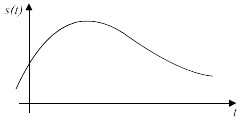Examples of digital media:
- signals
- internet
- digital audio
- digital video
- digital mobile phones
Digital data is based on the binary system. This system consists of the two digits: 0 and 1.
A bit is a single number, either 0 or 1, that is used to store information.
A byte is a basic unit of measurement, also used to store information, but is a series of bits.
Eight bits are equal to one byte.
A sampling rate, also called a sample rate, is expressed in samples per second, Hertz or any other unit. This rate defines the number of samples from an analog signal converted into a digital form.

Colour depth, or bit depth, is the term for the number of bits representing a specific colour. Colour depth affects video and still media, because it can pick up different colours, and it can determine what the image will look like. The sampling rate only effects video and audio because it picks only picks up sound, and it can't capture images.

No comments:
Post a Comment